
American Journal of Stem Cells
Scope & Guideline
Transforming stem cell research into real-world applications.
Introduction
Aims and Scopes
- Stem Cell Biology and Mechanisms:
Research exploring the fundamental biology of various stem cells including embryonic, mesenchymal, and induced pluripotent stem cells, along with their mechanisms of differentiation and function. - Clinical Applications of Stem Cells:
Investigations into the application of stem cell therapies in treating a variety of conditions, including but not limited to neurodegenerative diseases, cardiac issues, and wound healing. - Tissue Engineering and Regeneration:
Studies focused on the use of stem cells in combination with biomaterials and scaffolds for tissue engineering, aimed at regenerating damaged tissues and organs. - Immunology and Stem Cells:
Research examining the interactions between stem cells and the immune system, including the potential of stem cells to modulate immune responses in various diseases. - Stem Cells in Disease Models:
Utilization of stem cells as models to study disease mechanisms, particularly in cancer and genetic disorders, which aids in the development of novel therapeutic strategies.
Trending and Emerging
- Regenerative Medicine Applications:
There is a significant increase in research focusing on the use of stem cells for regenerative medicine, particularly in the treatment of chronic conditions such as heart disease, pulmonary fibrosis, and orthopedic injuries. - Innovative Biomaterials and Scaffolds:
A growing trend in the integration of advanced biomaterials and scaffolds in stem cell therapy, enhancing the effectiveness of cell delivery and tissue regeneration processes. - Immunotherapy and Stem Cells:
Emerging research on the role of stem cells in immunotherapy, particularly in cancer treatment, is gaining traction, highlighting their potential to modulate immune responses. - Stem Cells in Aging and Senescence:
Research on the implications of stem cells in aging and age-related diseases is trending, particularly studies addressing cellular senescence and its impact on stem cell function. - Applications of CRISPR and Genetic Engineering in Stem Cells:
The use of CRISPR technology and other genetic engineering techniques to modify stem cells for therapeutic purposes is becoming increasingly prominent in recent publications.
Declining or Waning
- Basic Stem Cell Research:
There has been a noticeable decline in purely basic research papers focusing on stem cell properties and characteristics, as the trend shifts towards applied and clinical research. - Traditional Stem Cell Sources:
Research on traditional sources of stem cells, such as adult stem cells derived from bone marrow, is less prevalent as newer sources like induced pluripotent stem cells and umbilical cord-derived stem cells gain more attention. - In vitro Studies without Clinical Relevance:
Studies that focus solely on in vitro experiments without a clear pathway to clinical application are becoming less common, with a greater emphasis now on translational research. - Stem Cell Therapy for Non-Serious Conditions:
Interest in using stem cell therapies for non-critical or less severe conditions appears to be waning, as research increasingly prioritizes serious and life-threatening diseases.
Similar Journals
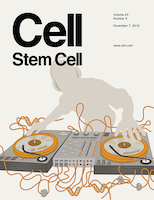
Cell Stem Cell
Unraveling the Mysteries of Stem Cells for a Healthier TomorrowCell Stem Cell, published by CELL PRESS, is a premier journal at the forefront of cellular biology, genetics, and molecular medicine. With an esteemed impact factor and recognized as a Q1 journal in multiple categories including Cell Biology, Genetics, and Molecular Medicine, it offers researchers, professionals, and students rigorous, peer-reviewed articles that shape the future of stem cell research and regenerative medicine. Located in Cambridge, MA, this journal has become an invaluable resource since its inception in 2007 and is committed to disseminating groundbreaking findings that drive innovation and understanding in these critical fields. By consistently ranking within the top percentile of its categories in Scopus, Cell Stem Cell remains an essential platform for scholarly communication, fostering collaboration among leading scientists worldwide. Although the journal does not currently offer open access options, its comprehensive insights are pivotal for anyone engaged in the study of stem cells and their applications.
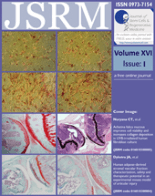
Journal of Stem Cells & Regenerative Medicine
Empowering Discoveries in Regenerative MedicineThe Journal of Stem Cells & Regenerative Medicine is a leading publication dedicated to the advancing field of stem cell research and regenerative medicine. Established in India and published by JOURNAL STEM CELLS & REGENERATIVE MEDICINE, this Open Access journal has been available since 2007, providing researchers and practitioners with free and unrestricted access to high-quality articles. With an ISSN of 0973-7154, the journal is indexed in Scopus, featuring a wide array of topics and insights into biochemistry, biotechnology, cell biology, and molecular biology, as denoted by its relevant quartile rankings. This journal is committed to bridging the gap between laboratory research and clinical applications, making significant contributions to the scientific community. The convergence of innovative studies from 2010 to 2024 positions it as an invaluable resource for those looking to stay at the forefront of stem cell and regenerative medicine research.

Russian Journal of Developmental Biology
Connecting past insights with future breakthroughs.The Russian Journal of Developmental Biology, published by PLEIADES PUBLISHING INC, serves as a significant platform for researchers and professionals engaged in the field of developmental biology. With the ISSN 1062-3604 and E-ISSN 1608-3326, this journal focused on intricate biological processes and dynamic developmental mechanisms from 2005 until 2017. Although its coverage is currently discontinued in Scopus, it remains notable for its contribution to understanding the pivotal roles of biochemistry and molecular genetics within the context of development. As a publication situated in the competitive quartiles of the field and boasting an influential Scopus rank of #77 out of #78, it has made a unique mark in developmental studies. Researchers and academics seeking to enhance their knowledge of historical advancements in the discipline will find the journal a valuable resource, even as it navigates the transition away from active publication.
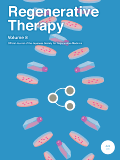
Regenerative Therapy
Exploring the future of biomaterials and biomedical engineering.Regenerative Therapy is a premier open-access journal dedicated to advancing the fields of biomaterials, biomedical engineering, and developmental biology. Published by Elsevier in Japan, this journal has been an influential platform since its inception in 2015, contributing significantly to the global discourse on regenerative medicine. With an impressive Q2 ranking in major categories such as Biomaterials and Biomedical Engineering, it is recognized for its quality of research and innovation. Researchers seeking to disseminate their findings or explore cutting-edge developments will find Regenerative Therapy to be invaluable, reflecting current trends and fostering collaborations across interdisciplinary boundaries. The journal offers open access, ensuring that high-quality research is available to a broad audience and enhances the impact of scholarly work in the regenerative medicine community.

NEUROCHEMISTRY INTERNATIONAL
Unveiling Insights in Cellular and Molecular NeuroscienceNEUROCHEMISTRY INTERNATIONAL, published by Pergamon-Elsevier Science Ltd, offers a premier platform for researchers and professionals in the realms of cell biology and cellular and molecular neuroscience. Established in 1980 and continuing its passion for advancing the field, this esteemed journal enhances scientific collaboration with a notable 2023 Q2 ranking in both relevant categories, placing it among the top-tier publications in its discipline with a Scopus rank of 23/97 for Cellular and Molecular Neuroscience. With its focus on groundbreaking research, the journal provides a wealth of vital data and insights that drive forward our understanding of neurochemistry and its implications in health and disease. While not an Open Access journal, NEUROCHEMISTRY INTERNATIONAL is integral for professionals, academics, and students aiming to stay at the forefront of neurobiological research innovations, making significant contributions to both academia and clinical applications.
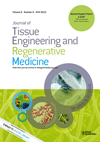
Journal of Tissue Engineering and Regenerative Medicine
Cultivating knowledge at the intersection of engineering and biology.Journal of Tissue Engineering and Regenerative Medicine, published by WILEY, stands as a pivotal platform in the fields of biomaterials, biomedical engineering, and regenerative medicine. With an ISSN of 1932-6254 and an E-ISSN of 1932-7005, this journal, based in the United Kingdom, has consistently delivered high-quality research since its inception in 2006, converging critical insights through 2024. With an impressive citation profile reflected in its Scopus rankings—specifically a rank of #58 in Medicine and #75 in Biomedical Engineering—the journal is acknowledged for its substantial impact, as demonstrated by its competitive quartile standings in 2023. Notably, it maintains a Q3 ranking in Biomaterials and Q2 in both Biomedical Engineering and Medicine (miscellaneous), showcasing its influence and relevance in the rapidly evolving interplay between engineering and medicine. The journal serves as a vital resource for researchers and practitioners aiming to stay abreast of innovations and breakthroughs in regenerative therapies, tissue scaffolds, and biomaterials. While not an open-access publication, it fosters academic dialogue and knowledge dissemination that is crucial for advancing the field.

STEM CELLS AND DEVELOPMENT
Transforming Insights into Impactful SolutionsSTEM CELLS AND DEVELOPMENT, published by Mary Ann Liebert, Inc., is a leading peer-reviewed journal dedicated to the rapidly advancing fields of stem cell biology and developmental science. With an ISSN of 1547-3287 and an E-ISSN of 1557-8534, the journal encompasses a broad range of topics central to understanding stem cells' roles in development and regeneration processes. It holds a prestigious standing within its category quartiles, ranking Q3 in Cell Biology, Q2 in Developmental Biology, and Q2 in Hematology for 2023. With its convergence from 2004 to 2024, STEM CELLS AND DEVELOPMENT fosters an innovative platform for researchers, professionals, and students to disseminate groundbreaking research, share insights, and explore novel therapeutic approaches. Open access options enhance the journal's visibility and accessibility, promoting a collaborative exchange of information among the scientific community. Positioned at the forefront of stem cell research and its applications, this journal is vital for anyone seeking to stay informed about the latest advancements and trends within these critical areas of study.
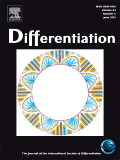
DIFFERENTIATION
Fostering Innovation in Cancer and Cell BiologyDIFFERENTIATION is a respected peer-reviewed journal published by Elsevier Science Ltd, dedicated to advancing knowledge in the fields of Cancer Research, Cell Biology, Developmental Biology, and Molecular Biology. With an established history since 1973, the journal continuously explores the intricacies of cellular and molecular processes that govern differentiation in biological systems, thus playing a pivotal role in shaping contemporary research directions. Currently indexed in the Q3 quartile across multiple relevant categories, it provides a crucial platform for researchers to disseminate their findings and engage with the scientific community. DIFFERENTIATION does not offer open access, but it remains a valuable resource for academics seeking to enhance their understanding of the fundamental mechanisms that underpin life sciences. By fostering a rigorous dialogue among scientists, it contributes significantly to the ever-evolving landscape of biochemistry and genetics.

Current Stem Cell Research & Therapy
Transforming Medicine through Stem Cell InsightsCurrent Stem Cell Research & Therapy, published by Bentham Science Publishers Ltd, is a leading journal dedicated to advancing the field of stem cell research. With an ISSN of 1574-888X and an E-ISSN of 2212-3946, this journal has been a valuable resource since its inception in 2006 and continues to broaden its scope through 2024. Recognized in the Q2 quartile for Medicine (miscellaneous) and ranked in the 66th percentile among its peers, the journal plays a crucial role in disseminating high-quality, peer-reviewed research that explores both the therapeutic and biological implications of stem cells. Located in the United Arab Emirates, Current Stem Cell Research & Therapy embraces a global audience of researchers, professionals, and students, providing a vibrant platform for discourse and innovation. While the journal offers subscription-based access, it remains committed to enhancing the scientific community's understanding of stem cell therapy and its applications across various medical fields.
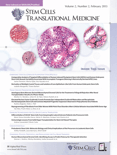
Stem Cells Translational Medicine
Transforming Discoveries into Clinical ApplicationsStem Cells Translational Medicine, published by Oxford University Press, is a leading open-access journal that has been at the forefront of stem cell research since its launch in 2012. With an impressive impact across various categories, it occupies Q2 in Cell Biology and is highly recognized in Q1 for both Developmental Biology and Miscellaneous Medicine in 2023. Its strong Scopus rankings highlight its significance in the fields of Biochemistry, Genetics, and Molecular Biology, achieving an outstanding percentile ranking of 93rd in Developmental Biology. The journal provides a pivotal platform for researchers, professionals, and students to publish and access cutting-edge findings that contribute to the understanding and application of stem cell technology. With a commitment to disseminating high-quality scientific knowledge, Stem Cells Translational Medicine plays a vital role in advancing research and innovation within the rapidly evolving landscape of regenerative medicine.